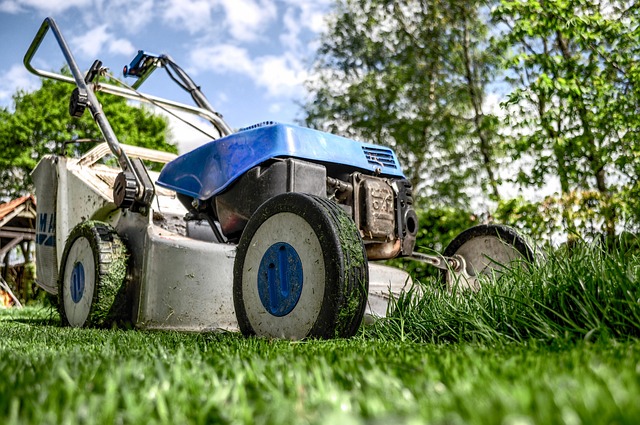Asda Gazebo: How to Choose, Assemble and Maintain Your Outdoor Canopy
Asda offers a practical range of gazebos and outdoor canopies that can transform your garden space into a comfortable retreat. From pop-up models perfect for occasional use to more permanent structures designed for year-round enjoyment, understanding the available options, assembly requirements, and maintenance needs will help you make an informed decision. Whether you're planning summer gatherings, need shelter from unpredictable weather, or want to create a dedicated outdoor dining area, selecting the right gazebo involves considering factors like size, materials, durability, and your specific space requirements.

What to Know About Asda Gazebo Models and Features
Asda stocks several gazebo types to suit different outdoor needs and budgets. Pop-up gazebos represent the most popular category, featuring lightweight frames that can be assembled quickly without tools. These typically include polyester canopies with water-resistant coatings and steel or aluminum frames. Permanent gazebos offer more substantial construction with heavier-duty materials and anchoring systems designed for extended outdoor use.
Most Asda gazebo models include essential accessories such as guy ropes, ground pegs, and carrying bags for portable versions. Some premium models feature sidewalls, mosquito netting, or reinforced corner joints. The retailer often stocks seasonal variations, with lighter models appearing in spring and more robust options available during peak summer months.
Choosing the Right Size and Style for Your Space
Gazebo sizing follows standard measurements, with common Asda options including 3x3 meters for intimate gatherings, 3x4.5 meters for medium groups, and larger 4x4 meter models for substantial outdoor events. Before purchasing, measure your intended installation area, accounting for guy rope extensions and clearance from boundaries, trees, or structures.
Consider your primary usage when selecting style features. Simple canopy-only models work well for temporary shade, while gazebos with sidewalls provide better wind protection and privacy. Corner leg designs affect stability, with angled legs typically offering better wind resistance than straight vertical supports. Color choices usually include neutral tones like beige, green, or blue that complement most garden settings.
Materials, Durability and Weather Resistance
Asda gazebos commonly feature polyester fabric canopies with polyurethane coatings for water resistance. Frame materials vary between powder-coated steel for budget models and aluminum for lighter, rust-resistant alternatives. Steel frames provide excellent stability but require careful maintenance to prevent corrosion, while aluminum frames offer better portability and weather resistance.
Fabric specifications matter significantly for longevity. Look for denier ratings indicating fabric thickness, with higher numbers suggesting better durability. UV protection ratings help prevent fabric degradation and color fading during extended sun exposure. Seam construction and reinforcement points around stress areas like corners and anchor points indicate overall build quality.
Wind resistance varies considerably between models. Basic pop-up gazebos typically handle light breezes but require takedown during stronger winds. More substantial models with proper anchoring can withstand moderate wind conditions, though extreme weather always necessitates removal or additional securing.
Step-by-Step Assembly and Stable Installation
Most Asda pop-up gazebos follow similar assembly procedures. Begin by laying the frame flat and extending legs to their locked positions. Two people should lift opposite corners simultaneously, allowing the frame to expand naturally. Avoid forcing the mechanism, as this can damage joints or fabric connections.
Once the frame is erected, attach the canopy by securing corner connections first, then working around the perimeter. Ensure fabric sits evenly without excessive tension that could stress seams. Install guy ropes at recommended angles, typically 45 degrees from each corner, and drive ground pegs firmly into soil.
For enhanced stability, consider additional anchoring methods like sandbags, water weights, or concrete blocks for hard surfaces. Wind-prone locations benefit from extra guy ropes attached to mid-frame points. Always check manufacturer weight recommendations for anchoring systems.
| Gazebo Type | Typical Price Range | Key Features |
|---|---|---|
| Basic Pop-up 3x3m | £40-80 | Steel frame, polyester canopy, carrying bag |
| Premium Pop-up 3x3m | £80-150 | Aluminum frame, reinforced corners, sidewalls |
| Large Pop-up 4x4m | £100-200 | Extended coverage, heavy-duty construction |
| Permanent Gazebo | £200-500 | Steel framework, anchoring system, weather-resistant |
Prices, rates, or cost estimates mentioned in this article are based on the latest available information but may change over time. Independent research is advised before making financial decisions.
Maintenance, Storage, Warranty and Returns
Regular maintenance extends gazebo lifespan significantly. Clean fabric canopies with mild soap and water, allowing complete drying before storage to prevent mold and mildew. Inspect frame joints periodically for wear or damage, particularly after strong winds or heavy use. Lubricate moving parts on pop-up mechanisms with appropriate sprays to maintain smooth operation.
Proper storage prevents premature deterioration. Disassemble pop-up models completely, ensuring all components are clean and dry. Store in original carrying bags or breathable containers, avoiding damp locations. For permanent installations, remove fabric panels during winter months in harsh climates, storing frames with protective covers.
Asda typically provides standard retail warranties covering manufacturing defects but not wear from normal use or weather damage. Return policies usually allow exchanges within specified periods for unused items in original packaging. Keep purchase receipts and assembly instructions for warranty claims or technical support needs.
Regular inspection schedules help identify potential issues before they become serious problems. Check fabric tension, frame stability, and anchor point security before each use, particularly after storage periods or adverse weather conditions.




